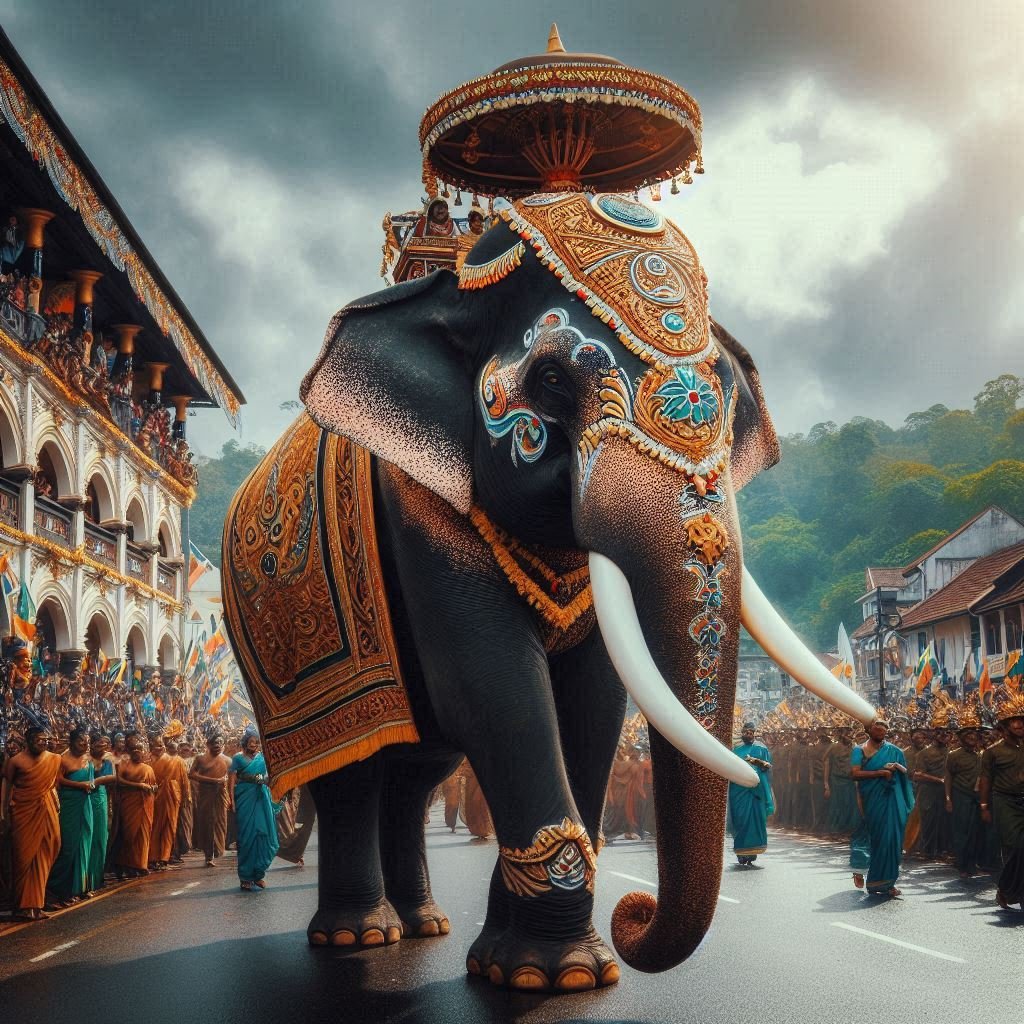
Sri Lanka, a beautiful island nation, is famous for its stunning beaches, lush green hills, and rich cultural heritage. But another treasure roams the land: the magnificent Sri Lankan elephant. These gentle giants are not only a vital part of the island’s ecosystem but also hold a special place in Sri Lankan culture for centuries.
The Sri Lankan elephant is a subspecies of the Asian elephant, the largest land mammal in Asia. Standing tall at 8-10 feet at the shoulder and weighing up to 12,000 pounds, they are truly impressive creatures. Sri Lankan elephants are the biggest among the three Asian elephant subspecies, easily distinguished by their darker complexion.
Sri Lanka boasts the highest density of Asian elephants in all of Asia. While some roam freely outside protected areas, several national parks offer incredible opportunities to witness these giants in their natural habitat. Udawalawe National Park is particularly renowned for guaranteed elephant sightings throughout the year. Yala, Lunugamvehera, Wilpattu, and Minneriya National Parks are also great choices, with Minneriya famous for the breathtaking spectacle of 200-300 elephants gathering around the reservoir during the dry season.

Elephants have been revered in Sri Lankan culture for centuries. They are depicted in ancient temples, play a role in religious festivals, and are even used in traditional medicine. The Sri Lankan elephant has also played a significant role in the country’s history, used in warfare and royal processions.
Sadly, despite their cultural significance, Sri Lankan elephants are classified as endangered. Habitat loss due to human encroachment and conflict between humans and elephants are major threats. Thankfully, Sri Lanka has strong laws protecting these gentle giants, with killing an elephant punishable by death.
Sri Lanka offers many elephant-related experiences for tourists. However, it’s crucial to choose responsible operators who prioritize the elephant’s well-being. Avoid activities that involve riding elephants or shows that exploit them. Instead, opt for safaris in national parks or sanctuaries that focus on ethical observation and elephant conservation.
Sri Lanka is a land where the past and present coexist beautifully. The future of Sri Lankan elephants depends on striking a balance between development and conservation. Through continued efforts to protect their habitat and promote responsible tourism, Sri Lanka can ensure these gentle giants continue to grace the island nation for generations to come.
Your blog post can end with a call to action, encouraging readers to learn more about elephant conservation efforts in Sri Lanka or even donate to organizations working to protect these magnificent creatures.
Sri Lankan government estimates suggest roughly 7,000 elephants.
Elephants need around 250kg-200kg foods per day and around 100L-150L of water.
The average lifespan of a Sri Lankan elephant in the wild is estimated to be between 50 and 70 years old. There are some reports that elephants in captivity can live up to 80 years,
6.6 feet (2 meters) to 11.5 feet (3.5 meters) at the shoulder
2,000 kilograms (4,400 pounds) to 5,500 kilograms (12,100 pounds)
Asian elephants are pregnant for 18-22 months.